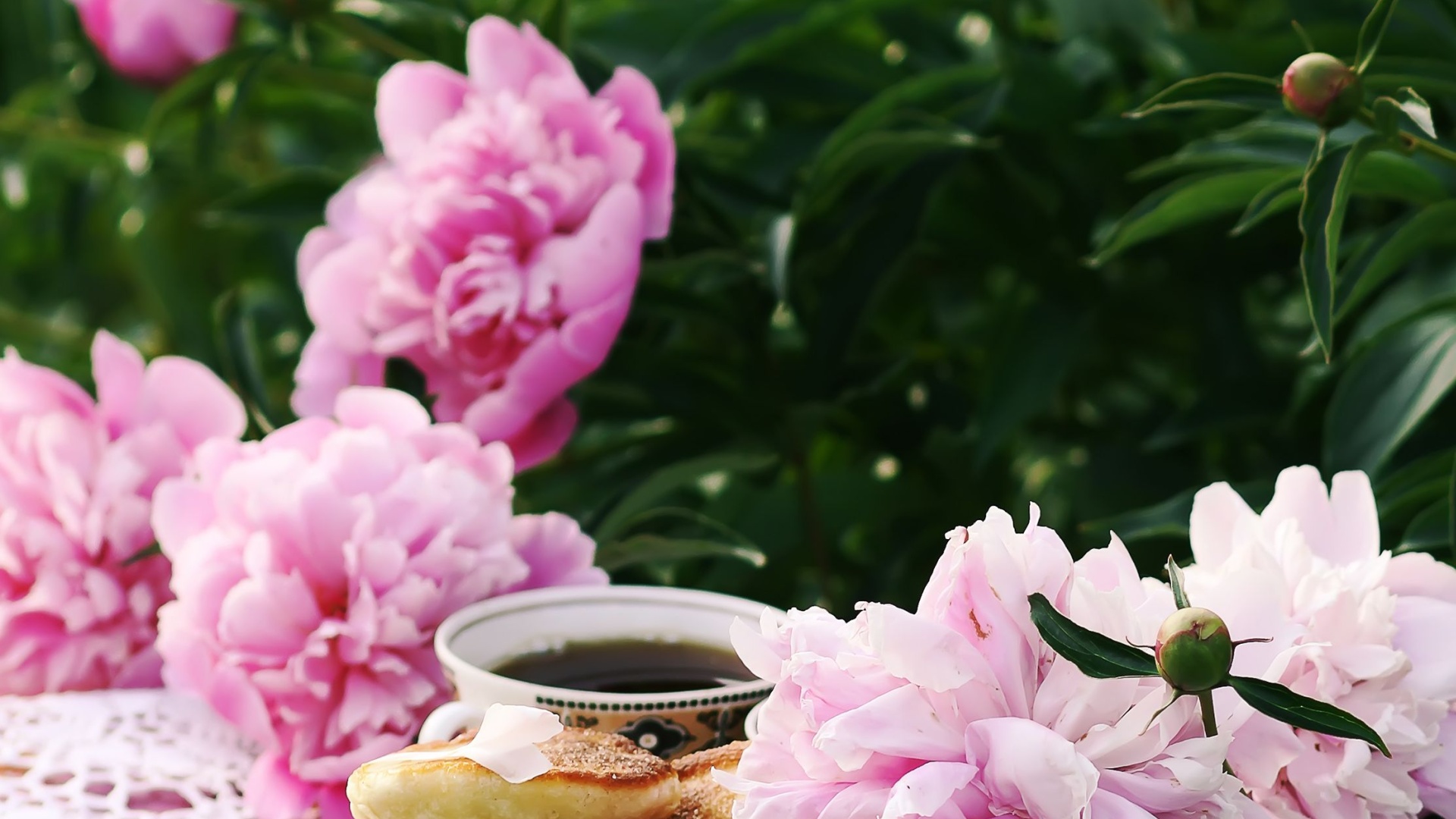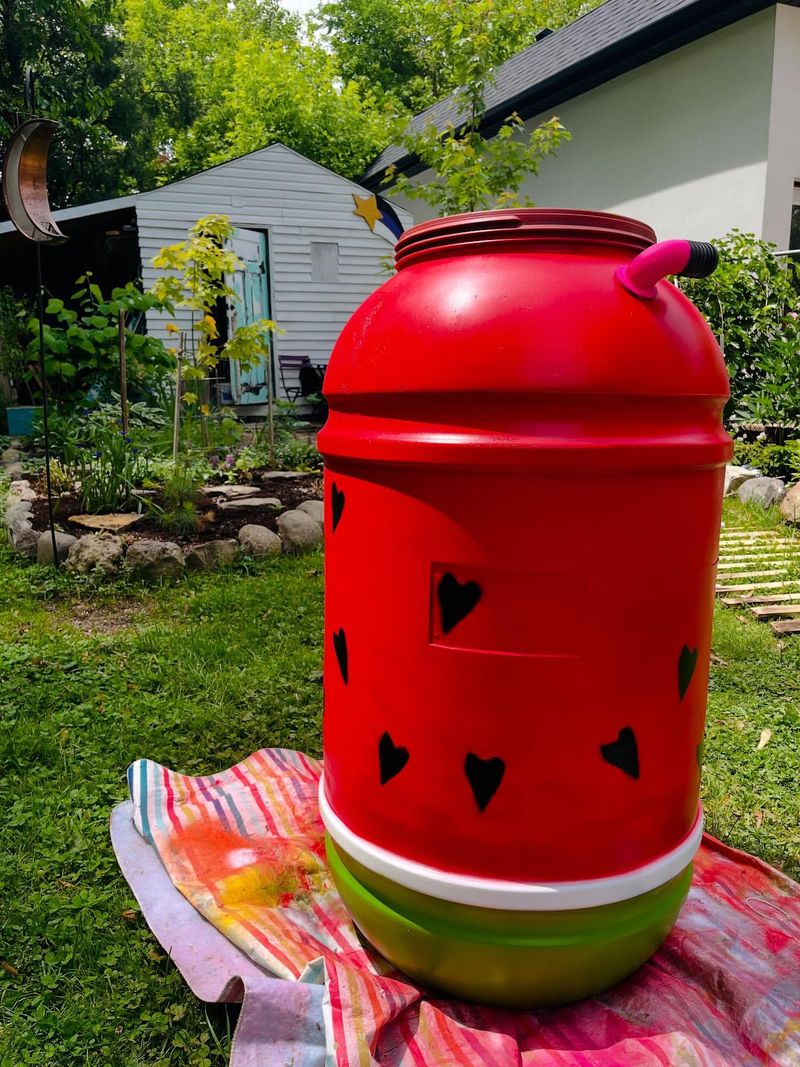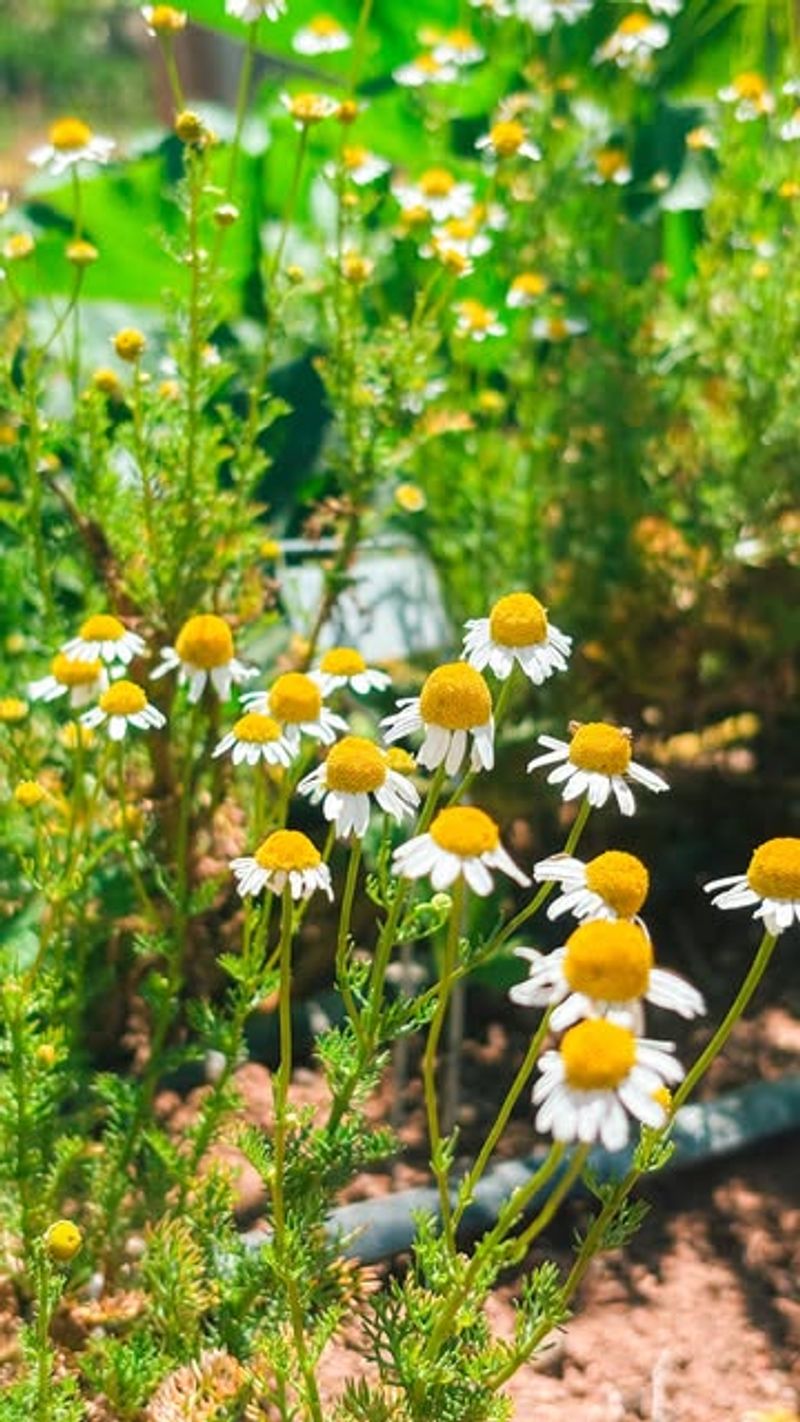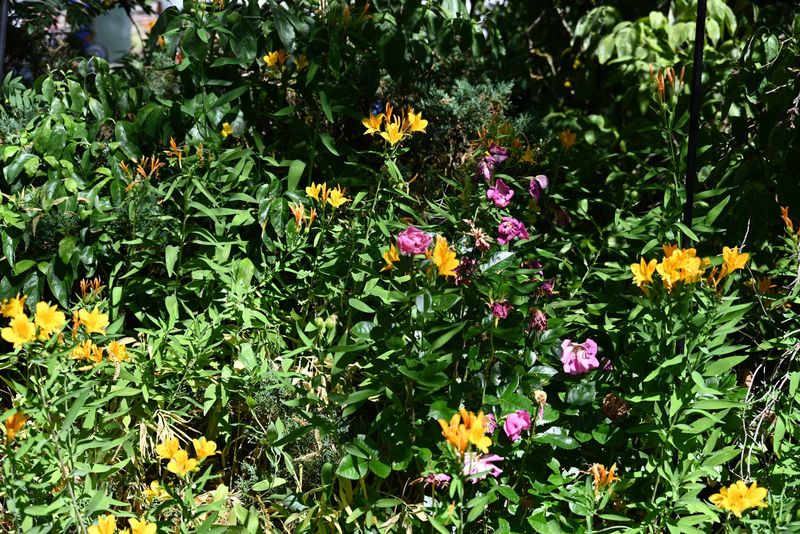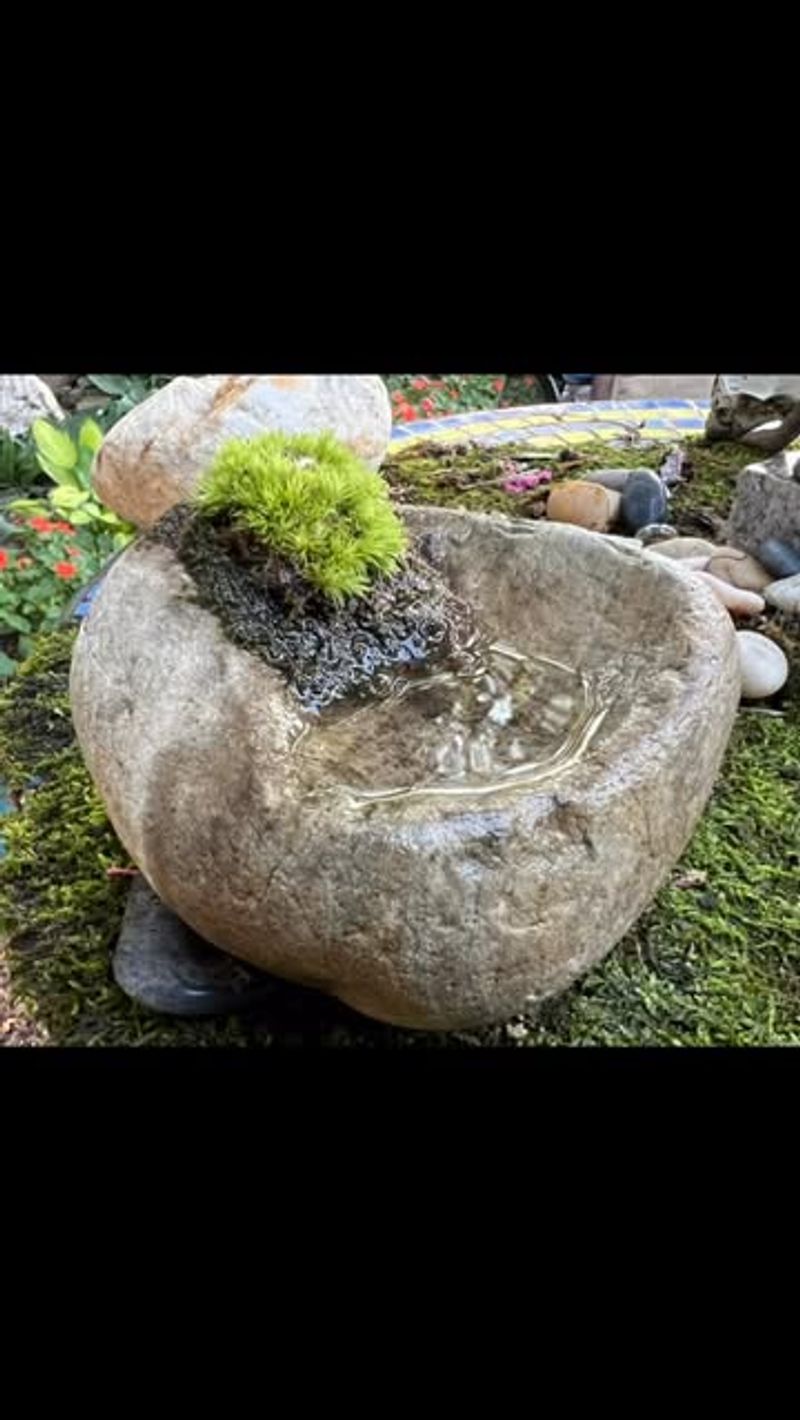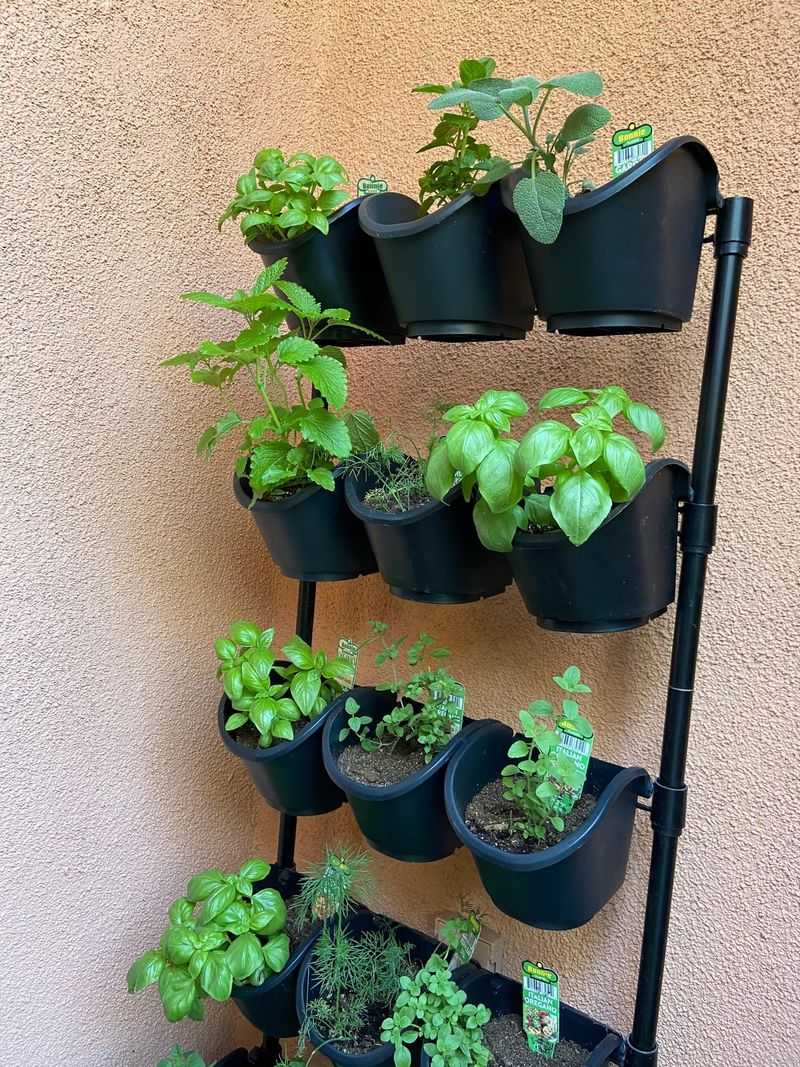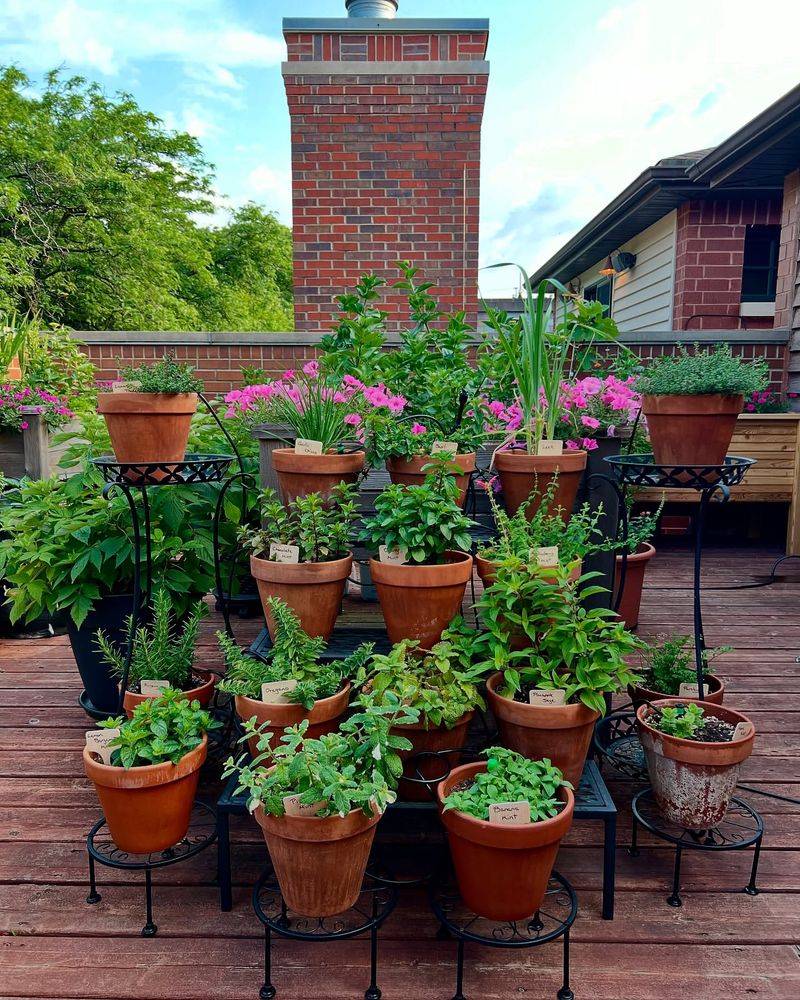Creating a tea garden combines the joy of growing plants with the pleasure of harvesting them for delicious brews. Portland’s mild climate and ample rainfall make it perfect for many tea-friendly plants that thrive in our Pacific Northwest conditions.
A mindful tea garden invites you to slow down, observe seasonal changes, and connect with nature in a meaningful way.
1. Rainfall Harvesting Stations
Portland’s famous rain can become your garden ally! Set up decorative rain barrels with bamboo spouts to collect precious rainwater for your thirsty tea plants.
The collected water will be free of chemicals found in tap water, making your herbs happier and your teas purer. Position barrels near downspouts and elevate them slightly for easy watering can access.
2. Chamomile Meditation Corner
Carve out a small nook where fragrant chamomile creates a carpet of tiny daisy-like blooms. Add a simple stone bench where you can sit and breathe in the apple-scented flowers while watching bees dance from bloom to bloom.
Roman chamomile forms a perennial mat while German chamomile grows taller with more abundant flowers for harvesting. Both varieties thrive in Portland’s climate and make wonderfully calming teas.
3. Pacific Northwest Native Tea Trail
Honor local ecology by incorporating native plants used traditionally for tea. Wild strawberry, Oregon grape, and Douglas fir tips can all be brewed into delicious, medicinal concoctions with deep roots in regional history.
Create a winding path with identification markers that tell the story of each plant’s traditional uses. Native plants require less water once established—perfect for Portland’s dry summers!
4. Japanese-Inspired Matcha Corner
Channel Portland’s sister-city connection to Sapporo by creating a Japanese-inspired garden corner. While true tea plants struggle in our climate, you can evoke the matcha experience with Japanese forest grass, dwarf maples, and moss-covered stones.
Add a small bamboo water feature that makes the meditative “tock” sound when water tips. This space becomes perfect for outdoor matcha preparation rituals using tea whisked from high-quality powder.
5. Vertical Mint Wall
Mints love Portland’s conditions but can quickly take over gardens. Solve this problem with a vertical growing system using repurposed gutters or hanging pockets on a sunny fence.
Grow chocolate mint, peppermint, spearmint, and apple mint—each in its own container to prevent mingling. The vertical arrangement keeps aggressive roots contained while making harvesting easy. Plus, the cascading effect creates a living green wall!
6. Four-Season Sensory Circle
Design a circular garden divided into four quadrants, each dedicated to a season’s best tea offerings. Spring: lemon balm and violets. Summer: lavender and roses. Fall: anise hyssop and sage. Winter: evergreen herbs like rosemary and thyme.
Place a small meditation bench or stump in the center where you can sit and notice seasonal changes. This layout encourages mindfulness of nature’s cycles—a perfect antidote to Portland’s sometimes gloomy winters.
7. Berry Tea Bounty Border
Line a sunny garden border with Portland-friendly berries that make outstanding teas. Raspberry leaves create a mineral-rich brew even when berries aren’t in season. Blueberries offer antioxidant-packed leaves and fruits.
Add native elderberry and evergreen huckleberry for immune-supporting winter teas. The border provides structure year-round while attracting beneficial insects and birds, creating a thriving mini-ecosystem that changes with the seasons.
8. Slow Gardening Journaling Station
Create a small weather-protected nook with a tiny desk made from a slice of salvaged Portland maple. Stock a waterproof container with garden journal, pencils, and tea tasting notes.
This becomes your mindfulness anchor—a place to record observations about plant growth, seasonal changes, and tea flavors. Add hooks for hanging freshly harvested herbs and a small shelf for drying. The station transforms garden chores into contemplative practice.

